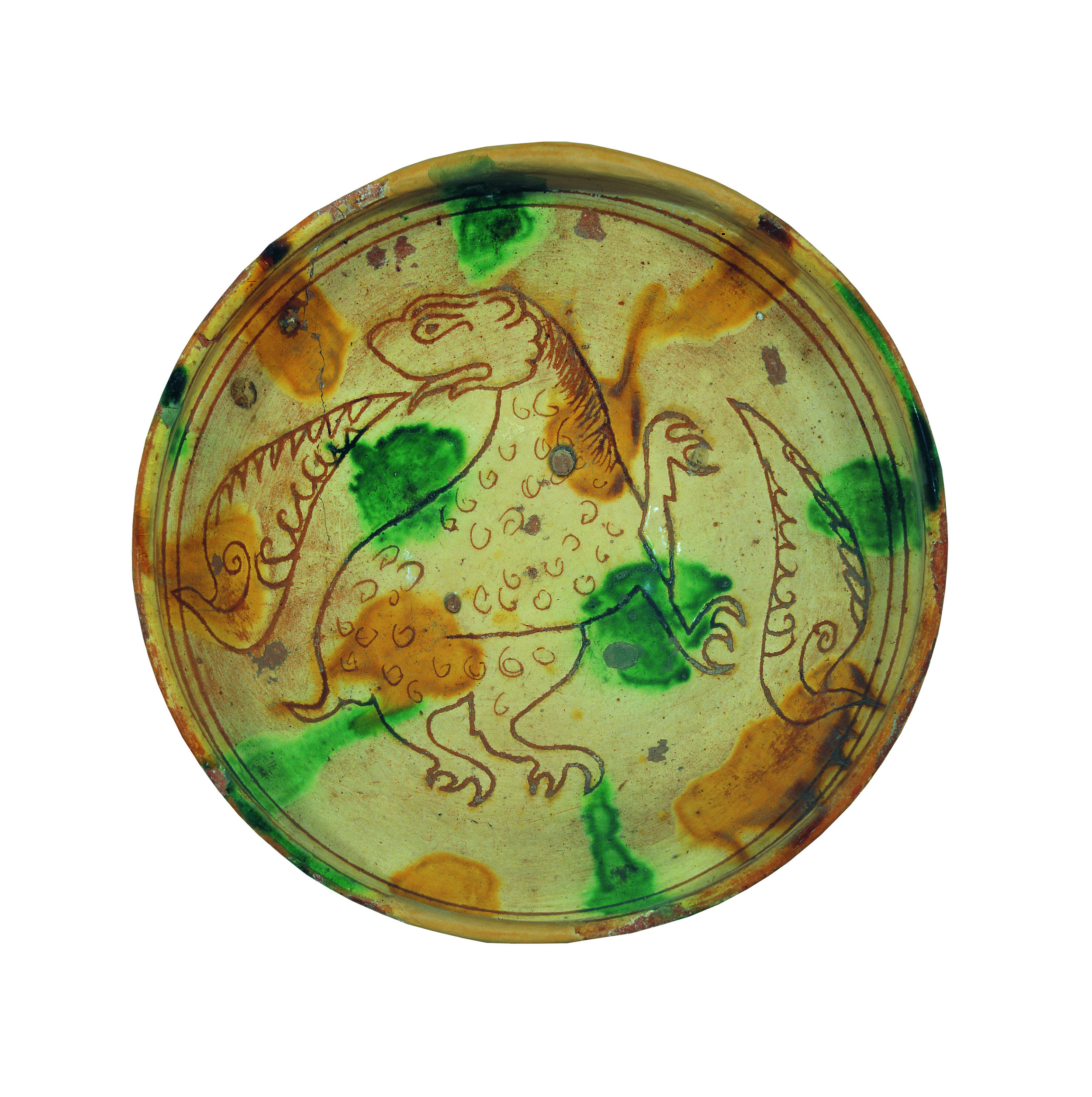

Glazed bowl
Clay bowl with a conical base and biconical body. The interior bears sgraffito and painted decoration on off-white slip. An animal with a mane, spots on its body and claws, rampant with its head turned backwards is depicted in the centre. The beast is flanked by two stylized trees, while brown-yellow and green brushstrokes have been added at various points. The inside and the band below the rim on the outside are glazed. Glazing is done once the decoration is complete: a layer of fine sand is placed on the pot which vitrifies when fired and gives the clay pot a slick surface. Glazed pottery was produced in large quantities in Byzantium into the Late Byzantine period, when imported Italian wares were substituted for local products. Glazed ceramics of this sort were probably luxury wares which replaced vessels made from precious metals.
PUBLICATION
Vassi O. 2007. Catalogue no. 6, in Skampavias K.—Chatzidakis N. (eds), Paul and Alexandra Canellopoulos Museum. Byzantine and Post-Byzantine Art, Athens, 20.
